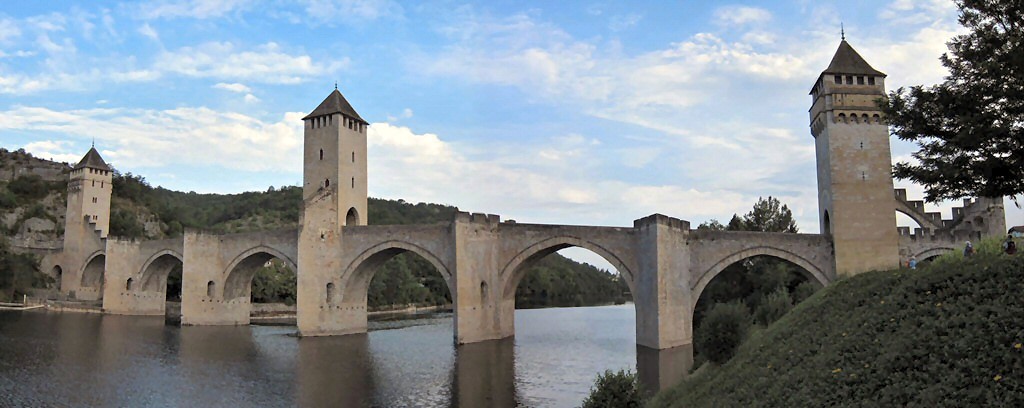In a wide loop of the lot is Cahors, the capital of the county of Quercy. Thanks to its central location in terms of transport, the town flourished in the 13th century. It became the first banking and stock exchange centre in Europe.
Through the Boulevard Leon Gambetta we come to Place F. Mitterand. The Boulvard separates the old town from the newer districts.
The cathedral of St Etienne dates back to the 11th century.
The vaulting of the nave with its elegant dome of 16 metres in diameter is remarkable. The domes with their foundations and pillars date from the 11th century.
The paintings in the western dome were commissioned by John XXII, the second pope in Avignon (John XXII came from Cahors).
The north portal with the Romanesque tympanum from the 12th century.
The Gothic cloister on the south side of the nave dates back to the beginning of the 16th century. It was built in place of an older Romanesque cloister and is richly decorated in Flamboyant style.
Pont Valentré
The famous Pont Valentré dates from the 14th century. It is one of the original three bridges with three fortified towers, six arches and pillars reinforced with pointed bastions. It is an exceptional example of a medieval defensive structure and became the symbol of Cahors. The Pont Valentré is a UNESCO World Heritage Site.

![]() The picture can be enlarged and all three towers become visible.
The picture can be enlarged and all three towers become visible.
Enlarge the browser window and click on the picture!
According to a legend, the devil helped to build the bridge. He was later immortalised on one of the towers.
Vreni and Gerhard on the Pont Valentré (a Selfi!)